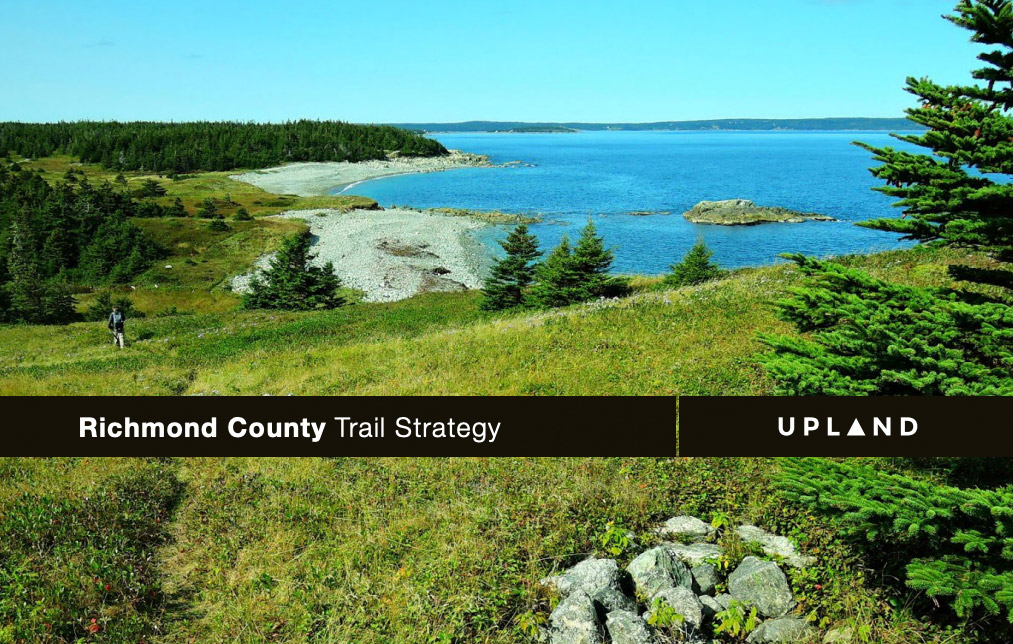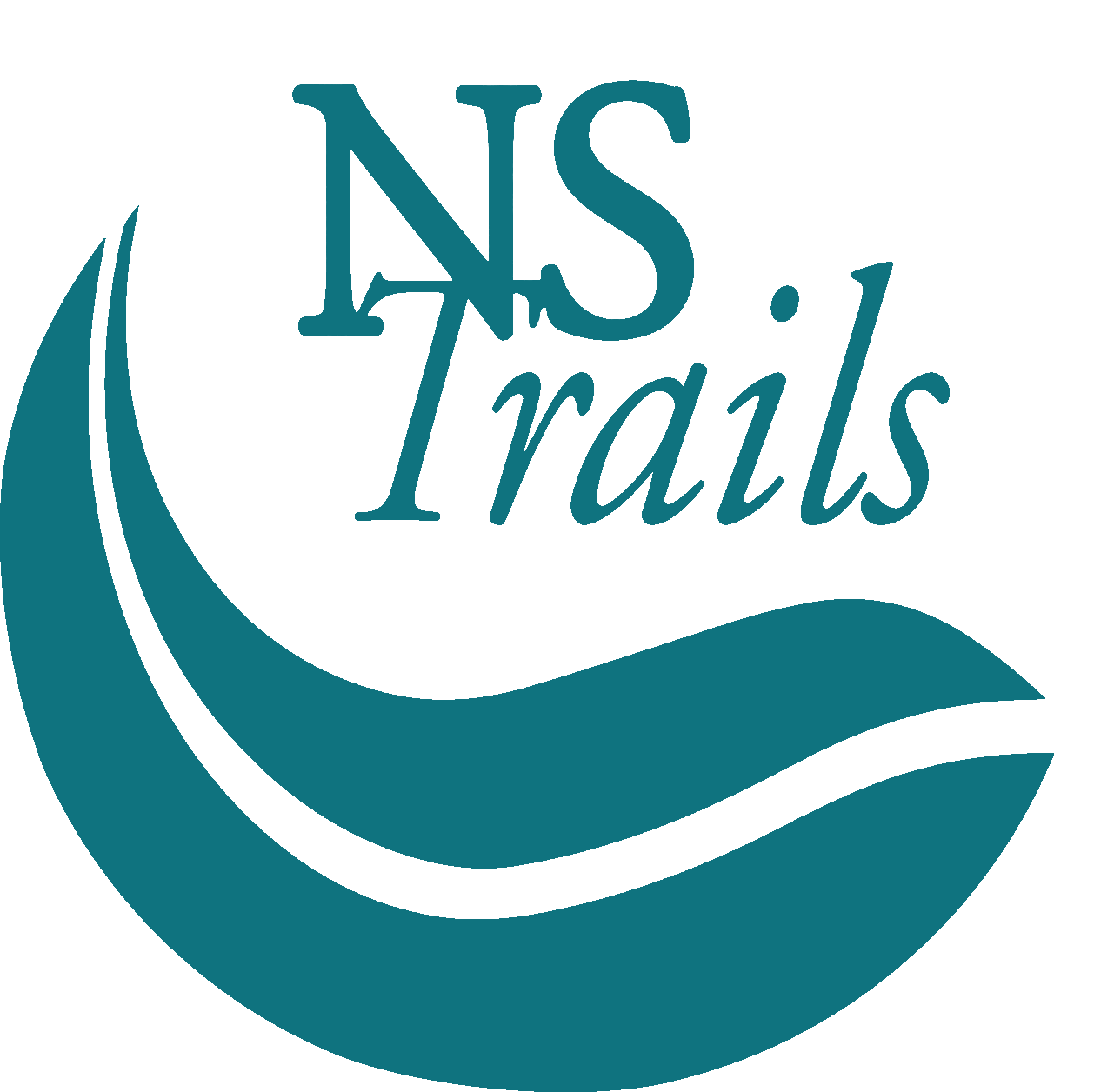The Richmond County Trails Strategy was approved by council on Monday, November 28, 2022. The strategy can be viewed at pdf Richmond County Trails Strategy(13.03 MB) .

Public Works Officially Announces it's Newest Batch of Road Trails Across Nova Scotia.

You may have noticed new Road Trail signs being installed in various areas of the province over the past few weeks. The Department of Public Works has now officially released the next group of approved Road Trail sites, which are already in effect. These roadways provide OHV riders with more options for trail connectivity and accessing services and amenities. The new sites are as follows:
1. Bloomfield Cross Road (Digby County): 1km on Bloomfield Cross Rd and 100m on Ridge Rd to connect the rail trail (trail #101) to amenities at Haines Lake.
2. Broad River_ Beech Hill Road (two road trails), (Queens Municipality): Two road trails comprised of 3.8km on Beech Hill Rd, 1.5km on Hwy #3 and 1.1km on River Head Rd. to connect the rail trail (trail #102) to Liverpool and the rail trail (trail #102) to Jordan River.
3. Churchover (Shelburne County): 1.9km on Shore Rd, 150m on Goulden Rd and 350m on Old Shore Rd to connect the rail trail (trail #102) to lodging at Boulder Cove Rd.
4. Cranton Crossing Road (Inverness County): 640m on Cranton Cross Rd and 1.6km on West Big Interval Rd to connect trail #105 to Highland Rd and trail #105 to Cheticamp and also to connect to amenities in the area.
5. Lennox Passage 2 (Richmond County): 500m on Rogers Rd, 150m on Hwy 206 and 7.7km on Hwy 320 to connect trails on Isle Madame to the rail trail (trail #2) into River Tillard.
6. Port Clyde (Shelburne County): 600m on Hwy #309, 1.65km on Greenwood Rd and 1.9km on Shore Rd to connect the rail trail (trail #102) to Gunning Cove to the rail trail (trail #102) to Yarmouth.
7. Pubnico Access 2 (Yarmouth County): 450m on Hwy #3 to connect the rail trail (trail #102) to amenities.
8. Spa Road 2 (Shelburne): 320m on Spa Rd to connect the Town of Shelburne road trails to the rail trail (trail #102) to Jordan River.
These newly approved Road Trails bring the total to 26-provincially approved and four municipal sites. Additional proposed sites continue to be assessed by the province and ATVANS will share any updates when they become available.
Links to all approved road trails (including maps), and the Road Trails Act are included below.
Recreation Trails Grant Program
pdf
Multi Use Pathway (Non Motorized) Trail Creation, Rehabilitation and Improvement 2025-26(394 KB)
Application, Fillable Form
pdf
Multi Use Pathway (Non Motorized) Trail Creation, Rehabilitation and Improvement 2025-26(381 KB)
Application, Printable Form
pdf
Shared Use Pathway Trail Creation, Rehabilitation and Improvement 2025-26(384 KB)
Applicaiton, Fillable Form
pdf
Shared Use Pathyway Trail Creation, Rehabilitation and Improvement 2025-26(568 KB)
Application, Printable Form
For more information contact:
Danielle Martell
Community Development & Special Projects Coordinator
(902) 226-2400
Maximum of one application per organization.
Community Trails Leadership Fund
Department - Organization: NS Dept of Communities, Culture, Tourism and Heritage
Description: The grant supports the trail development community in Nova Scotia through the provision of funds for leadership, organizational development, and capacity building. The fund will help organizations offer training and educational opportunities for volunteers and the trail professionals who support them. It also helps the organizations acquire the expertise needed for specific aspects of trail projects. Applicants are expected to contribute at least fifty percent (50%) of the overall cost of the initiative, inclusive of contributions obtained from other sources (financial and in-kind). Applicants unable to contribute the expected amount (50% of overall cost) are encouraged to discuss their proposed initiative and financial situation with their local Regional Manager and/or CCTH Trails Consultant
Deadline: Ongoing applications from April 1st, until fully allocated.
Website: Community Trails Leadership Fund
Trail Engineering Assistance Grant Program
Department - Organization: NS Dept of Communities, Culture, Tourism and Heritage
Description: The grant is designed to provide trail builders and managers with a source of funding to help them hire engineering expertise when it is required. For hiring engineers when building, maintaining, and supporting multi-use trails and non-motorized single-use to help ensure Nova Scotia’s trails are both safe for trail users and environmentally sound. Applicants are encouraged to contribute to the overall cost of the initiative. The contribution level required depends on the need and the ability of the applicant to contribute.
Example(s): Inspection and assessment of existing trail structures. Components of planning requiring an engineer (i.e. site plan for a bridge). Design of trail components which must be engineered to a specific standard. Rehabilitation plans. Other occasions when it is appropriate to seek the advice of a professional engineer.
Deadline: Ongoing applications from April 1st, until fully allocated.
Contact: or your regional CCTH manager.
Website: Engineering Assistance Grant Program
Trans Canada Trail
Department - Organization: Trans Canada Trail
Description: The Trail Funding Program is intended to support Trail operators across Canada in the development and enhancement of the Trans Canada Trail by offering a range of funding streams designed to support specific Trail priorities. There are eight streams of funding:
- Climate Impact and Emergency Support Fund: This fund requires a 50% match. Open for applications.
- Accessibility and Inclusion in Trails: 35% of eligible expenses, with a maximum of $20k-$50k based on project type. Open for applications.
- Indigenous Communities: To support projects and initiatives led by Indigenous communities. 35% of eligible expenses, with a maximum of $20k. Open for applications.
- Trail Infrastructure and Major Repairs: Total project costs $10,000-150,000 (20-75% funded). Closed, next intake TBD.
- Trail Signage: 35% of eligible expenses, maximum contribution dependent on project, see website. Closed, next intake TBD.
- Trail Destination Development: Includes visitor-use management, tourism infrastructure and tourism experience or product development. 35% of eligible expenses, with a maximum of $20k-$50k based on project type. Closed, next intake TBD.
- Minor Maintenance: Total project costs between $2,000 and $25,000 may be funded up to 50%. Closed, next intake TBD.
- Greenway Development Stream: Planning and construction projects along the Trans Canada Trail that will increase and improve active transportation within the network, via greenway development, and improve the safety and comfort of users. Planning and design 50% of the total project costs, maximum of $50,000. Construction phases are limited to 35% of the total project costs, up to a maximum of $60,000. Closed, next intake TBD.
Deadline: See above.
Contact: It is highly recommended to contact a Trans Canada Trail representative at and discuss your unique vision and work plan before deciding whether to apply.
Website: Trans Canada Trail
 ATVANS Interactive Map
ATVANS Interactive Map
The ATVANS interactive mapping application page is available free of charge. This map will provide all the trails and services close to the trails indentified on the map.


TRAIL ETIQUETTE PRINCIPLES:
1 - Expect Others, Respect Others
The number of people out on trails is rising fast! Depending on the trail you might come across hikers, runners, bikers, ATVers, snowmobilers, dirt bikers, skiers, horseback riders, folks with mobility aids or furry friends. Everybody will have a different level of ability and experience - and that's okay! The golden rule is to treat each other with respect and kindness.
2 - Pass with Class
When you meet someone on the trail, slow down and communicate. Give a signal that you're there, and then pass at a safe speed. A smile and a wave go a long way! There are standard guidelines for how to safely pass others listed below. Know before you go!
3 - Leave No Trace
Whether we realize it or not, the way we behave in the outdoors has a direct impact on the environment. There are simple things we can do to keep our impact small. Never leave trash or food waste behind on a trail - if you can carry it in, you can carry it out. Stay on marked, open trails. Always respect wildlife, plants and animals.
4 - Value The Volunteers
Trails don't pop out of nowhere. The majority of trails in Nova Scotia are built and maintained by volunteers. These folks are passionate about creating safe outdoor experiences for everyone in the community. A great way to show appreciation for volunteers is to take care of the trail and encourage others to do the same!
TRAIL ETIQUETTE RULES:
- Trail safety is the responsibility of all users
- Wheels yield to heels - ATVers. motorcyclists and snowmobilers yield to all other trail users. Bicyclists yield to hikers and walkers who in turn yield to horseback riders.
- Know and obey posted trail rules
- Stay on the trail and stay to the right
- Travel at a reasonable speed at all times, slow down at corners
- Give a clear warning signal when passing others
- Respect and be considerate of landowners along the trail
- Do not walk or ride under conditions where you might damage the trail
- Do not litter, always clean up after yourself and your pets
- Use provided toilet facilities. If you are unable to find a facility, dig a hole 6 inches deep at least 200 feet from any open water
- Respect wildlife - do not disturb plants or animals
- Obey trail curfews (usually 11pm to 5am)
People hiking, walking or snowshoeing
- Step aside to let others pass whenever possible
- Those going downhill yield to those going up
- Avoid using trails that are groomed specifically for cross county skiing in winter
People on bikes
- Obey speed limits
- Use your bell or your voice to let people know you are approaching
- Always yield the trail to hikers, walkers, and less mobile trail users
- Slow down when passing or approaching corners
- Know your ability, your equipment, and the area
- Do not ride under conditions where you might damage the trail
People on ATVs or motorcycles
- Obey speed limits
- Announce your presence (i.e. Honk) when approaching a trail user from behind
- To pass someone. Follow at a safe distance until you reach a safe place to pass. Then pass slowly
- Slow down when entering quiet zones or residential neighbourhoods
- Stay on the trail Do not ride on areas that are wet. Have loose soil, steep slopes, meadows or swamps
- Avoid late-night riding near populated areas
- When camping, ride directly to and from your campsite or turn off your vehicle and push it
- Minimize noise through proper care and operation of your off-highway vehicle
- Stay off groomed snowmobile trails during the winter months
People on snowmobiles
- Obey speed limits
- Stay on the trail
- Do not ride on tracks made for skiers
- Avoid late-night riding near populated areas or lodges
- Yield to cross country skiers who are going downhill
People on horseback
- Obey speed limits
- Practice minimum impact techniques
- Always clean up after your horse
- Keep horses in campsites only long enough to un-pack or pack them
- Never tie your horse within 200 feet of a lake, stream or spring
People on cross country skis
- Ski on the right side of the trail
- Yield to snowmobiles when you are going uphill
- Yield to anyone coming downhill or anyone faster
- To step out of the track, lift your skis so the track won't be disturbed
- When breaking trail, keep skis wider than normal
People with pets
- Clean up after your animal - do not throw poop bags in the woods
- Keep pets on a leash or lead, unless otherwise indicated
- If your pet is in an off-leash area, be sure it remains under your control
- Keep your pet on the trail
- Do not let your animal disturb wildlife
For more information about NS Trails visit https://nstrails.com/


